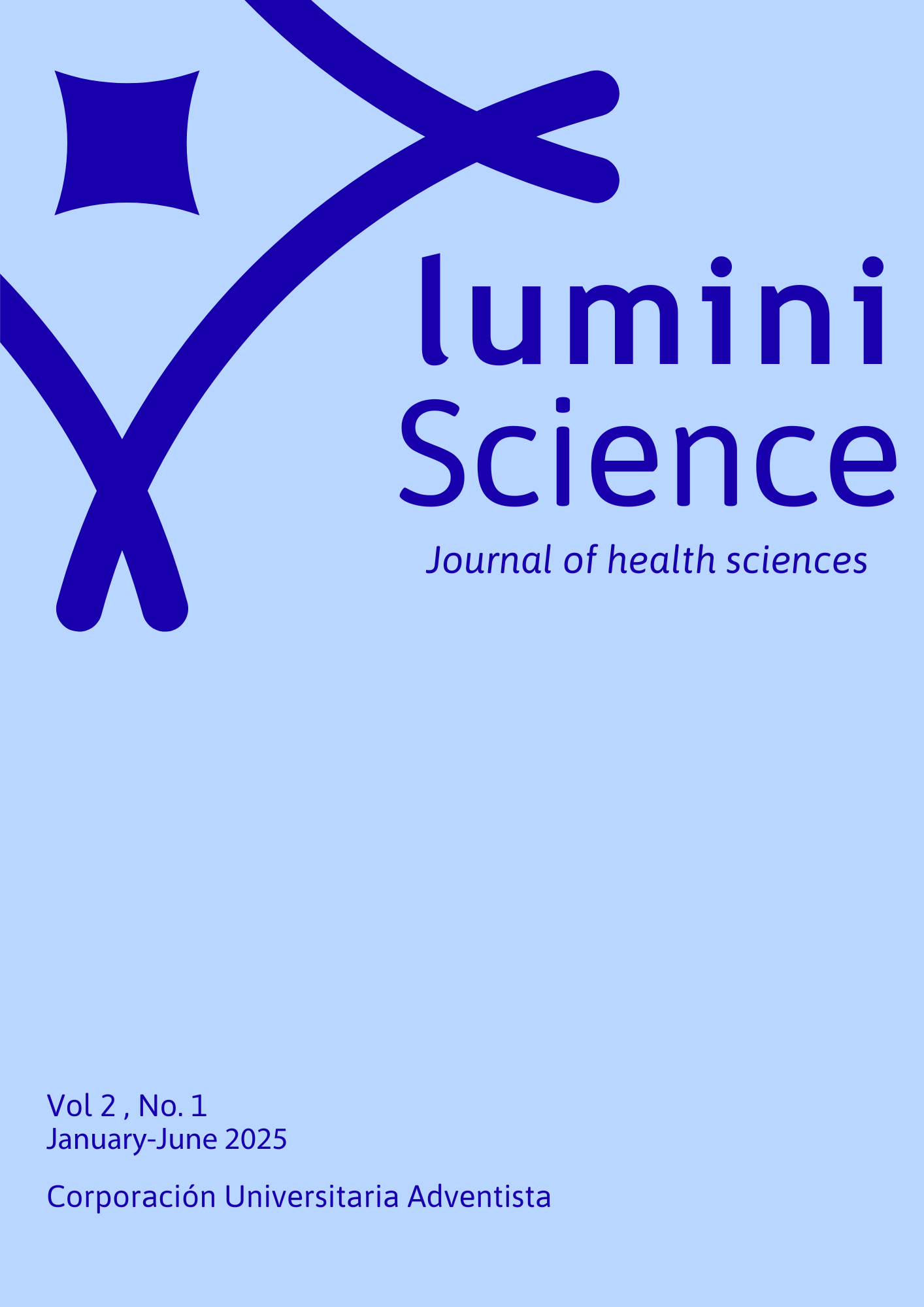Abstract
Introduction: Emergency care in Floridablanca faces challenges such as traffic congestion, which makes it difficult for ambulances to reach the required location. This prolonged response time can generate morbidity and mortality, affecting patients' quality of life. Objective: The general objective of this project was to design a proposal for a prehospital motorcycle care system for the municipality of Floridablanca. Methodology: A quantitative, exploratory, cross-sectional, and non-experimental study was conducted. The sample was selected non-probabilistically and consisted of 100 people. Results: The research proposes a viable system of pre-hospital care in motorcycle ambulances, composed of four components: human talent, infrastructure, service provision, and response time. The proposed guide resulting from this research defines the relevant guidelines for each of the four components of the proposed system. Conclusion: The proposed implementation of a motorcycle-based system to provide prehospital care in the municipality of Floridablanca is feasible. This could reduce the time it takes to reach the site of care and reduce the patient's after-effects. This innovative alternative has great potential to contribute to the quality of prehospital care. In the future, it would be interesting to study how to implement this proposal in other settings, especially those with difficult access or low incomes.
References
1. Organización Mundial de la Salud (OMS). Traumatismos causados por el tránsito. [Internet]. 2023. Disponible en: https://www.who.int/es/news-room/fact-sheets/detail/road-traffic-injuries
2. El Colombiano. Contraloría advierte que siniestralidad vial superó las 8.600 víctimas en 2022 y 2023. [Internet]. 2024. Disponible en: https://www.elcolombiano.com/colombia/salud/cuantos-muertos-vial-este-ano-FH24896928
3. Alcaldía de Bucaramanga. Sistema de Emergencias Médicas ha atendido más de 1.770 accidentes de tránsito. [Internet]; 2022. Disponible en: https://www.bucaramanga.gov.co/noticias/sistema-de-emergencias-medicas-ha-atendido-mas-de-1-770-accidentes-de-transito/.
4. Yurt E, Gümüşsoy S. Exploring the experiences and challenges of motorcycle ambulance personnel in pre-hospital emergency healthcare services: A qualitative study. Work [Internet]. 2024 Sep 4;1–11.Disponible en: http://dx.doi.org/10.3233/wor-240113
5. Peyravi, MR; Tubaei, F & Pourmohammadi, K. The Efficiency of Motorlance in Comparison with Ambulance in Shiraz, Southern Iran; IRANIAN RED CRESCENT MEDICAL JOURNALarrow_drop_down [Internet].2009 Sep 17; 11(3): 330-333. Disponible en: https://www.ircmj.com/article_205668.html
6. Apiratwarakul K, Suzuki T, Celebi I, Tiamkao S, Bhudhisawasdi V, Pearkao C, et al. “Motorcycle Ambulance” Policy to Promote Health and Sustainable Development in Large Cities. Prehospital and Disaster Medicine [Internet]. 2021 Dec 16;37(1):78–83. Available from: http://dx.doi.org/10.1017/s1049023x21001345
7. Apiratwarakul K, Phungoen P, Cheung LW, Tiamkao S, Suzuki T, Pearkao C, et al. Optimizing Operation Time and Travel Distance for Motorcycle Ambulances in Emergency Medical Services. Prehospital and Disaster Medicine [Internet]. 2022 Dec 7;38(1):88–94. Available from: http://dx.doi.org/10.1017/s1049023x2200228x
8. Ssebunya R, Matovu JKB. Factors associated with utilization of motorcycle ambulances by pregnant women in rural eastern Uganda: a cross-sectional study. BMC Pregnancy and Childbirth [Internet]. 2016 Mar 3;16(1). Available from: http://dx.doi.org/10.1186/s12884-016-0808-0
9. Hofman JJ, Dzimadzi C, Lungu K, Ratsma EY, Hussein J. Motorcycle ambulances for referral of obstetric emergencies in rural Malawi: Do they reduce delay and what do they cost? International Journal of Gynecology & Obstetris [Internet]. 2008 Jun 16;102(2):191–7.Disponible en: http://dx.doi.org/10.1016/j.ijgo.2008.04.0
10. Alvarado MM. Rural Wichay: Vehículo para el traslado de Emergencia a Centros de Salud en Zonas Rurales del Perú. [Internet] 2019. Disponible en: https://www.studocu.com/pe/document/pontificia-universidad-catolica-del-peru/historia-del-arte/alvarado-eslava-rural-wichay-vehiculo-1/106776201
11. Oliveira IG, Cavalcante FE, Mola R. Prevalencia y factores asociados a los accidentes de motocicleta por área de ocurrencia. [Internet].; 2019. Disponible en: https://scielo.isciii.es/scielo.php?script=sci_arttext&pid=S1695-61412020000300093
12. Cárdenas Gómez JC & Marcillo Pintado JP. Lesiones neurológicas por accidentes de tránsito en vehículos de dos ruedas. Servicio de emergencia. Hospital Vicente Corral Moscoso. Cuenca- Ecuador. 2014–2018. [Internet] 2020 Disponible en: https://dspace.ucuenca.edu.ec/items/f8080063-ac2b-4a30-840e-443f252acc27
13. Ilmaz, C; Livatyali, H &Arslan, MS, Design of a motorcycle ambulance with an integrated passenger seat mechanism for emergency response, [Internet] 2025, PROCEEDINGS OF THE INSTITUTION OF MECHANICAL ENGINEERS PART D-JOURNAL OF AUTOMOBILE ENGINEERIN Garrow_drop_down. Disponible en: https://journals.sagepub.com/doi/abs/10.1177/09544070241312959.
14. Wilson A, Hillman S, Rosato M, Skelton J, Costello A, Hussein J, et al. A systematic review and thematic synthesis of qualitative studies on maternal emergency transport in low‐ and middle‐income countries. International Journal of Gynecology & Obstetrics [Internet]. 2013 Jun 24;122(3):192–201. Available from: http://dx.doi.org/10.1016/j.ijgo.2013.03.030
15. Mathur S, Walter S, Grunwald IQ, Helwig SA, Lesmeister M, Fassbender K. Improving Prehospital Stroke Services in Rural and Underserved Settings With Mobile Stroke Units. Frontiers in Neurology [Internet]. 2019 Mar 1;10. Available from: http://dx.doi.org/10.3389/fneur.2019.00159
16. V P, IV R, A SA, ML C. Increasing Emergency Response Time: A Smart GPS and IoT-Based Approach for Ambulance Optimization. 2024 Second International Conference on Advances in Information Technology (ICAIT) [Internet]. 2024 Jul 24;1–5. Available from: http://dx.doi.org/10.1109/icait61638.2024.10690489.

This work is licensed under a Creative Commons Attribution-NonCommercial-NoDerivatives 4.0 International License.
Copyright (c) 2025 Lumini-Science: Journal of Health Sciences


